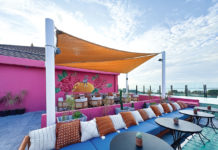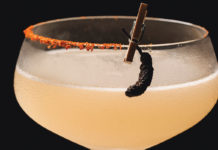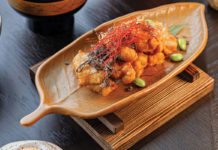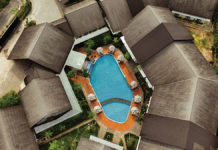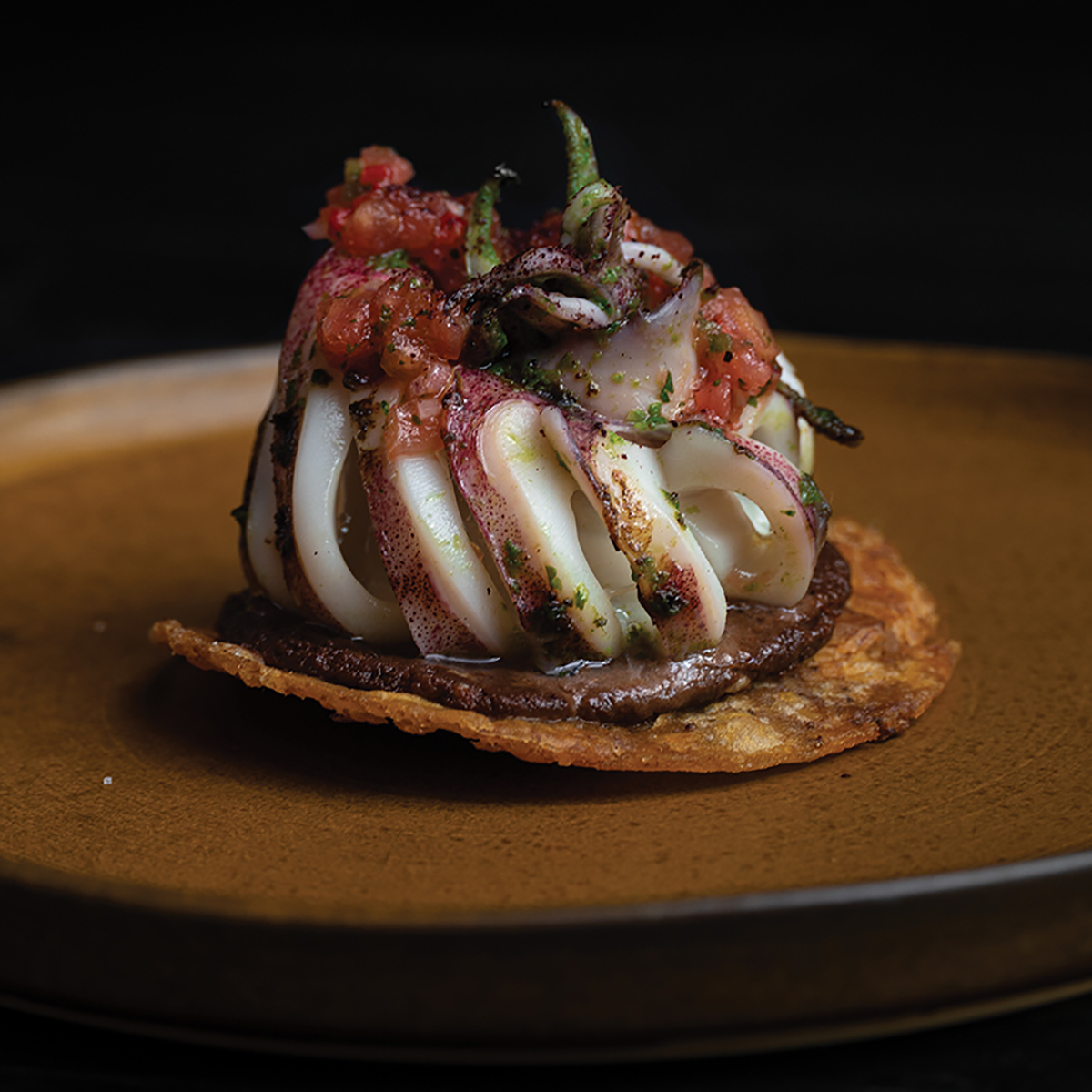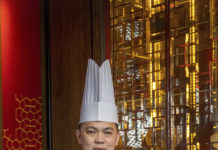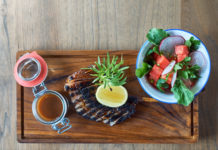
Hailing from Colombia, culinary creatives Andres Becerra and German Rincon, together with like-minded friends, established Santanera in Bali. The gastronomic destination offers a celebration of flavours and good times to be shared. They divulge some ideas about the restaurant, as well an insight into the culinary industry.
–
by Runi Indrani
E: How did you first get into the culinary industry?
G: I tried different things, including economics and architecture, but at the end of the day I wasn’t really good at any of that. Somehow, I discovered that I was really good at cooking so I decided to do that for life.
A: I was pretty much born into the hospitality industry. My family ran a restaurant back home and I pretty much fell in love with the business and how much passion and effort the people in the hospitality industry put into their work. That’s basically how I started.
E: How would you describe the restaurant to someone who has never been?
G: Santanera is a culinary experience for people to come and journey through different flavours, flavours they haven’t tried before. We also want to show casual dining, where people can come and grab a snack, grab a beer with some friends, and have a good time.
A: I think there is a misconception of Santanera being a fine-dining restaurant, and that’s not what we’re trying to do. We want to give the customers that come through the door a good experience, from the food to the beverages, the whole experience in general. We don’t consider ourselves to be a fine dining establishment. Obviously, we take a lot of care in what we do in every single sense. This is a casual place where the style of dining is inspired by the Spanish-style, where you start with the snacks. We have one or two bites just to get you started and excited, before you jump into bigger dishes served in the middle of the table to be shared. It’s an experience that brings everyone together.
E: What is the biggest challenge you came across when you were establishing Santanera?
G: Building Santanera was a whole new adventure for us. The project started when we were still living in Melbourne, so we had to start everything from far away. There was the language barrier, trying to find suppliers and the right products, building a team and many different issues. At the end of the day, we’re okay, but it was a lot of hard work.
A: Coming here brought us out of our comfort zones, because we, as chefs, didn’t have experience in Indonesia, here in Bali. We worked in Australia for a number of years so we knew where we could get certain products, we knew the market and clientele very well, also the suppliers and what’s available. That’s something we’re trying to create here also, and what we’re trying to do is to use local products as much as we can, and in many situations it’s a bit of a challenge. But overall, opening a restaurant, here or anywhere, is not easy, that’s for sure. But it’s rewarding hopefully.
E: Let’s say there’s a guest from out of town who only has time for one dish and one drink, what would you recommend?
G: Personally, I would say grab a cold beer and a nice ceviche. That’s what we do in South America, but there are many different options so you really have to read the customer and go the right way.
A: I’d probably tell them to come, sit at the bar, get a nice glass of Bianchetto, a natural wine from Italy. Also, the tartelette, because you get different layers of flavours: the umami from the fermented citrus, crunchy pastries, saltiness from the salmon roe and tapioca pills blanched in lemon juice. You have just one bite and you’ll get this explosion of flavours.
E: What advice would you give someone who wants to get into the culinary industry or build their own restaurant?
G: Always plan ahead, think about all the small details and the functionality. Be ready to spend most of your time on it and put life into it.
A: Hard work, dedication, and also passion. I don’t think you should get into this industry unless you’re passionate about it. There are a lot of misconceptions with the whole social media stuff, that being a chef is quite a prestigious position. I wouldn’t say so. It’s a lot of hard work, dedication, discipline. If anyone wants to get in this industry, perhaps first wash some dishes. If you’re able to do it and actually say I like the hard work, then yeah. It requires a lot of sacrifice physically, mentally, emotionally. If you’re willing to do all that, then you should get into the industry, otherwise, it’s not for you.
Wood Fire Baby Squid
INGREDIENTS
Aji salsa
- 300g tomato, diced small
- 100g shallots, diced small
- 20g coriander, finely chopped
- 5g long red chillies, diced small
- 2g habanero, diced small
- 3g jalapeno, diced small
- 150g tomato water
- 30g white wine vinegar
- 10g lemon juice
- 3g salt
- 2g black pepper
- 10g olive oil
Marinated baby squid
- 500g baby squid, cleaned
- 132g garlic, peeled
- 200g flat parsley
- 400g sunflower seed oil
- 10g sea salt flakes
Black garlic mole
- 300g black garlic
- 55g sunflower seeds
- 50g sesame seeds
- 30g garlic, peeled
- 500g brown onions
- 170g whole almonds, blanched
- 60g chipotle peppers
- 150g dark chocolate
- 100g lemon juice
- 500g water
- 25g sea salt flakes
- 2tbs squid ink
Patacon (plantain cracker)
- 3 plantain (green)
- 600ml sunflower oil
METHOD
- For the aji salsa, grate 400g tomato, pass through a fine sieve, discard seeds and skin. In a separate bowl mix the rest of the ingredients then add the tomato water, adjust seasoning so it is sour and a bit spicy.
- For the marinated baby squid, ensure the squid is properly cleaned. Put marinade ingredients in a food processor until smooth. Remove and mix with the squid.
- For the black garlic mole, roast almonds, sunflower seeds and sesame in the oven at 160C until dark brown. Slice brown onions and garlic, sweat down to tender without colour. Add chipotle peppers and black garlic, cook for five minutes then add chocolate until melted. Transfer all the ingredients to a thermomix and blitz until a fine puree. Season with sea salt, transfer to a plastic container and cover with baking paper.
- For the patacon, heat oil to 120C. Meanwhile, peel the plantain and cut into five pieces around 6cm long to obtain equal cylinder shapes, then blanch in the oil for five minutes until the plantain are quite soft to the touch. Do not cook all the way through. Remove from the oil and set aside. While the cylinders are warm, press until flat as possible, possibly using a rolling pin, set aside.
- To assemble, fry the patacon until crispy, set aside. Meanwhile, chargrill the baby squid for three minutes, depending on size. To serve, spread some of the black garlic mole on one patacon. Put one or two pieces of squid on top, then dress with aji salsa. This recipe makes 15 portions, you will definitely want to eat more than one!
Santanera
Jalan Tanah Barak No.55-57, Canggu, Kec. Kuta Utara, Kabupaten Badung, Bali 80351
T: (+62) 81246658896
E: info@santanerabali.com
santanerabali.com


